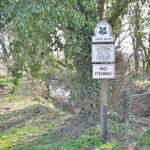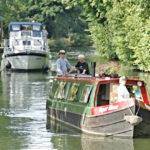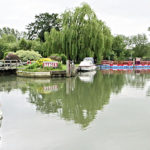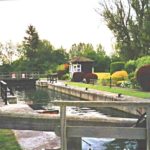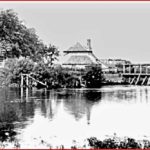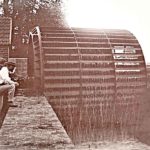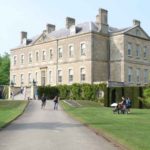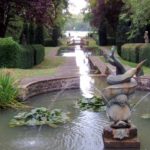Buscot is a delightful small English village on the upper Thames River. The village itself is about 2.4 km (1.5 miles) south-east of Lechlade, on what is now the A417 road. Buscot was part of Berkshire until the 1974 boundary changes transferred it to Oxfordshire.
Buscot has been a very long-established district. On some very early maps it was called Burcot. The St Mary’s Anglican Parish Church itself was built about 1200. It is located adjacent to the River Thames and about 400 metres from where the Sellard-Selwood family lived at the Old Malt House. The church was the centre of district community life, but in those times the river itself was the vital transport hub for the wider region.
Just 500 metres down river from the church is the Buscot lock. This is the second lock, of 45, on the Thames River, and is the smallest lock. It was built in 1790 and today it looks much the same. The lock and weir were owned at that time by Edward Loveden who was a strong advocate of Thames navigation. He was the original builder, in 1779 to 1783, and owner of Buscot Park mansion.
The lock was purchased by Australian Robert Campbell in 1859 as part of his purchase of the Buscot Estate, a major acquisition of 3,500 acres (1,420 hectares). He built a massive alcohol distillery adjacent to the lock on what is now known as Brandy Island. He installed water wheels to supply water to a large reservoir, to farmland, to the village and to the distillery. One of these water wheel pumps exists today adjacent to the Buscot lock. Most of the Campbell innovations at Buscot occurred at the time Isaac Sellard and young James were agricultural labourers on the estate. We will take a closer look at these developments in the next chapter.
Some 300 metres upstream on the Thames from the Buscot church was the Cheese Wharf. Today it is a tranquil picnic and swimming spot but well into the 19th century it was a very busy place where cheeses from the local and western counties were offloaded from their wagons and stored in long-gone warehouses owned by Edward Loveden. These cheeses were then loaded onto barges to begin the four- to five-day trip downriver to the City of London. Some 2-3,000 tons of multi-variety cheeses were shipped annually down the Thames.
About a further kilometre up river is St Johns lock. This is the first of the 45 locks on the Thames and is 71 metres above sea level. It is on the outskirts of Lechlade, another delightful but larger village, within walking distance of Buscot, and which was probably visited regularly by the Selwood-Sellard family.
The most notable property and estate in the Buscot district is Buscot Park. In the next chapter we will take a closer look at Robert Campbell’s Buscot Estate in the 1860s and 1870s when young James Selwood was a gamekeeper and agricultural labourer. At that time the estate became one of the most highly industrialised farms in 19th century England.
The Buscot Park Estate was bequeathed to the England National Trust in 1956 by the subsequent owner of the estate, Lord Faringdon, and his descendants. The National Trust owns most of Buscot village, the Buscot lock and Cheese Wharf, as well as most of the land and buildings of the original Campbell Estate, which are leased out.
For Selwood descendants, the Buscot district is a lovely area to explore as part of an ancestral pilgrimage. So too is the Ottery St Mary district of Devon where Helena Jeffery had her early life.

